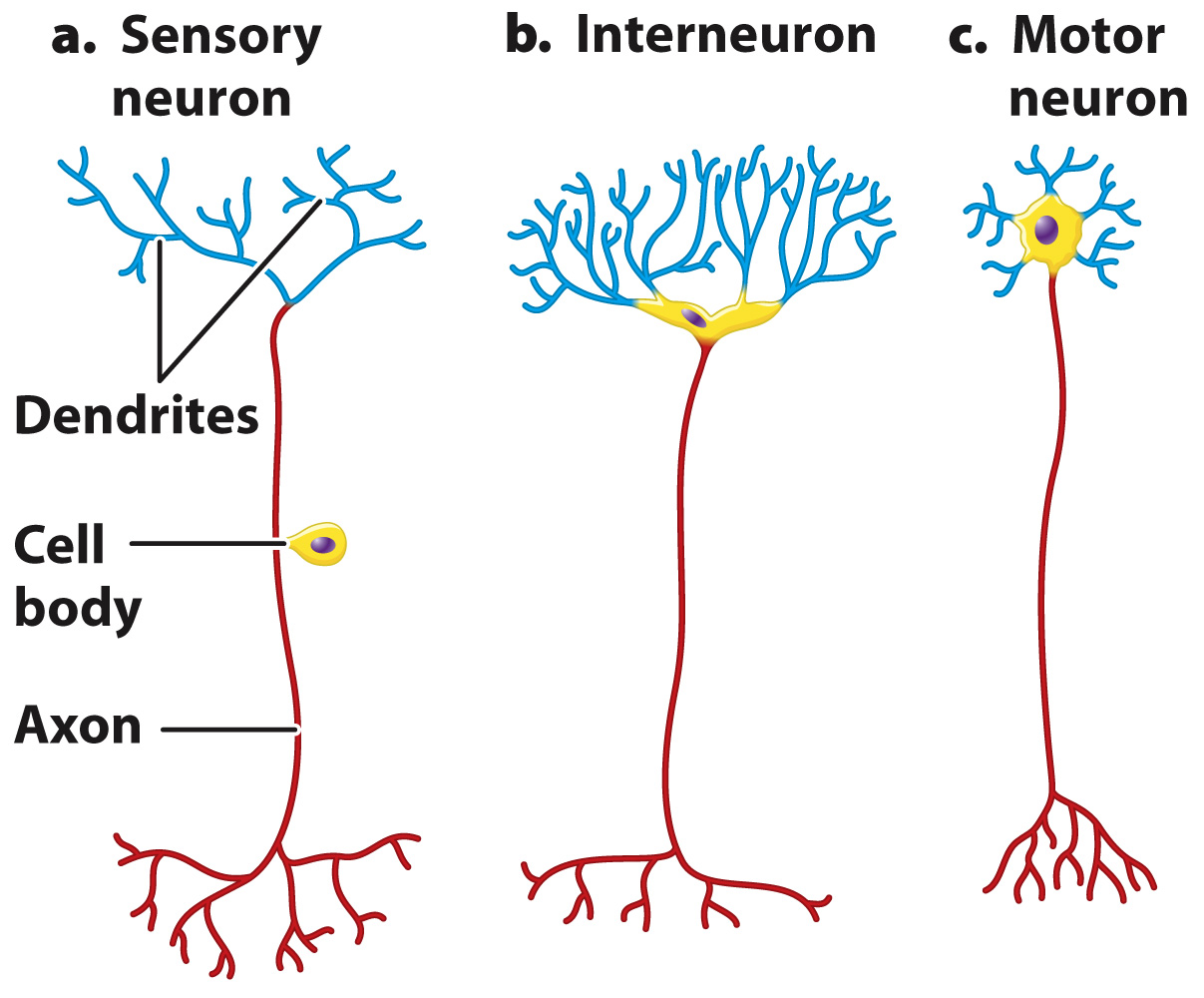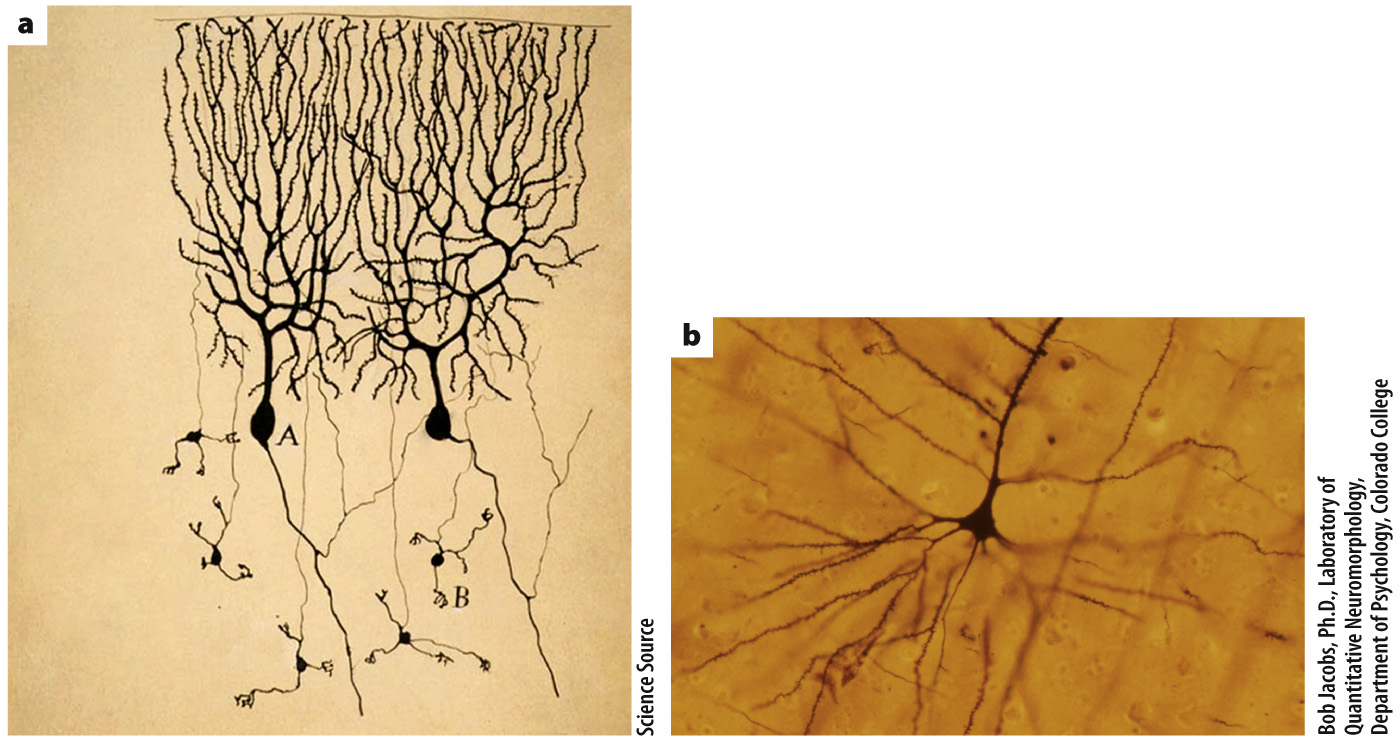Neurons differ in size and shape.
In spite of their common organization, neurons show a remarkable diversity in size and shape. Some neurons, such as interneurons, are very short, whereas others, like the motor neuron that extends from your spinal cord to your big toe, are several feet long. The number of extensions coming off the cell body can also vary in different neurons (Fig. 35.5). Some sensory neurons involved in smell, sight, and taste have just two extensions coming off the cell body (Fig. 35.5a), whereas other neurons have many more (Fig. 35.5b and 35.5c).

The cell bodies of some neurons have distinctive shapes. For example, pyramidal neurons, as their name suggests, have triangular-

The degree of branching of a neuron’s extensions can vary from one neuron to the next. A neuron’s dendrites form a finely branched field that receives inputs from many other nerve cells. A neuron with more dendritic branches receives inputs from more sources than one with fewer branches. Some neurons receive information only from nearby regions through a few dendrites that branch close to the cell body. Other neurons receive information from many branching dendrites. Axons typically have fewer branches than dendrites.
Signals from all the dendrites, converging on the neuron cell body, determine the strength, or frequency, and timing of signals carried by the neuron’s axon. The process of bringing together information gathered from different sources is referred to as the integration of information. The degree of branching and the number of synapses that a neuron makes with neighboring nerve cells, therefore, reflect how information is processed and integrated by the cell as part of a larger circuit.